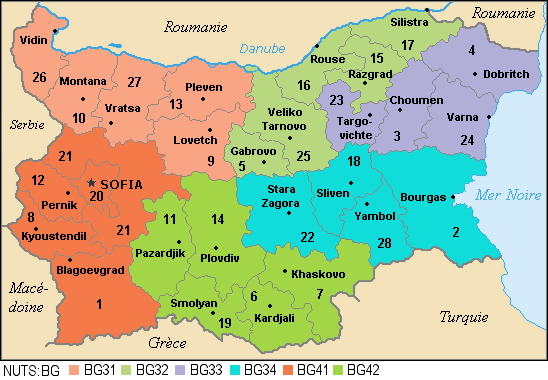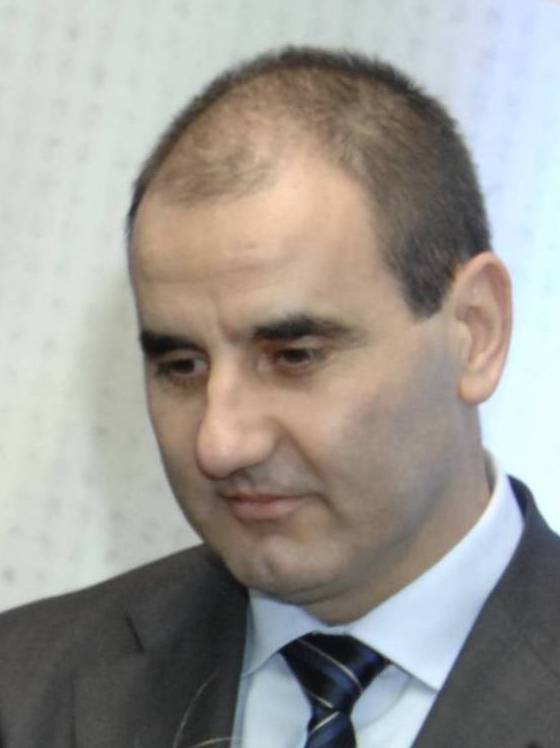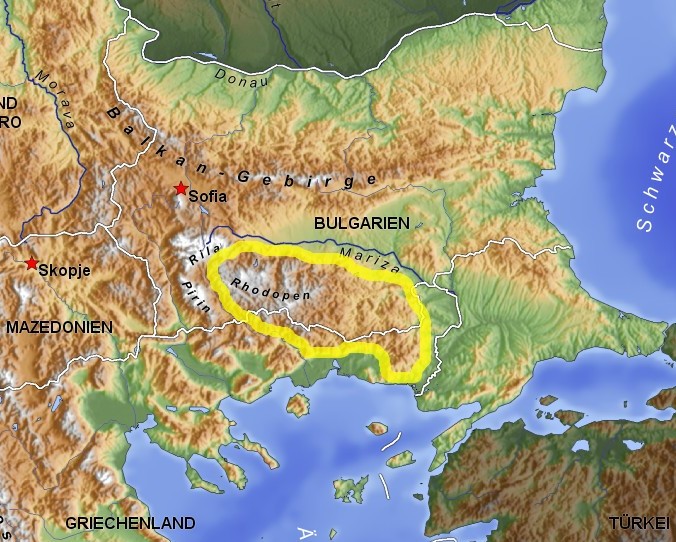|
Hrabrino
Hrabrino ( bg, Храбрино) is a village in the Rodopi Municipality, Plovdiv Province in southern Bulgaria. According to a 2011 census, the village has a population of 661 people. Geography The village is situated in the Rhodope Mountains at 15 km to the south-west of Bulgaria's second largest city, Plovdiv. There are two large and expanding villa zones in the mountainous part of the village. There are two rivers flowing through the village, the main one being Parvenetska reka. Hrabrino is a starting point of tourist tracks leading to several refuges in the mountain. History Until 1934 the village was known as ''Sveti Spas'' and until 1960 its name was ''Sotir''. Landmarks There are a church and four chapels in Hrabrino. The Chapel of St Dimitar is situated in the highest point of the village near the monument to the partisans of the Rhodope region. At 5 km from the center at the direction to Brestovitsa is located the Chapel of St Spas after which the village was ... [...More Info...] [...Related Items...] OR: [Wikipedia] [Google] [Baidu] |
Parvenetska Reka
The Parvenetska reka ( bg, Първенецка река) is a 37 km-long river in southern Bulgaria, a right tributary of the river Maritsa. The river takes its source under the name Ribnevo dere at an altitude of 1,816 m some 500 m west of the summit of Modar (1,992 m) in the Chernatisa ridge of western Rhodope mountain range. It flows a north-northeastern direction in a deep forested valley. After the Tamrash State Forestry it is also known as the Tamrashka reka. Downstream of the confluence with its largest tributary, the Lilkovska reka, the river enters in a deep dramatic gorge until the village of Hrabrino. At the village of Parvenets, it enters the Upper Thracian Plain, where the riverbed is corrected with protective dikes. It flows into the Maritsa at an altitude of 164 m in the western neighbourhoods of Bulgaria's second largest city, Plovdiv. Its drainage basin covers a territory of 217 km2 or 0.4% of Maritsa's total and borders the drai ... [...More Info...] [...Related Items...] OR: [Wikipedia] [Google] [Baidu] |
Countries Of The World
The following is a list providing an overview of sovereign states around the world with information on their status and recognition of their sovereignty. The 206 listed states can be divided into three categories based on membership within the United Nations System: 193 UN member states, 2 UN General Assembly non-member observer states, and 11 other states. The ''sovereignty dispute'' column indicates states having undisputed sovereignty (188 states, of which there are 187 UN member states and 1 UN General Assembly non-member observer state), states having disputed sovereignty (16 states, of which there are 6 UN member states, 1 UN General Assembly non-member observer state, and 9 de facto states), and states having a special political status (2 states, both in free association with New Zealand). Compiling a list such as this can be a complicated and controversial process, as there is no definition that is binding on all the members of the community of nations conc ... [...More Info...] [...Related Items...] OR: [Wikipedia] [Google] [Baidu] |
Provinces Of Bulgaria
The provinces of Bulgaria ( bg, области на България, oblasti na Bǎlgarija) are the first-level administrative subdivisions of the country. Since 1999, Bulgaria has been divided into 28 provinces ( bg, области, links=no – ''oblasti;'' singular: – '' oblast''; also translated as "regions") which correspond approximately to the 28 districts (in bg, links=no, окръг – '' okrǎg'', plural: – ''okrǎzi''), that existed before 1987. The provinces are further subdivided into 265 municipalities (singular: – '' obshtina'', plural: – ''obshtini''). Sofia – the capital city of Bulgaria and the largest settlement in the country – is the administrative centre of both Sofia Province and Sofia City Province (Sofia- grad). The capital is included (together with three other cities plus 34 villages) in Sofia Capital Municipality (over 90% of whose population lives in Sofia), which is the sole municipality comprising Sofia City province. Term ... [...More Info...] [...Related Items...] OR: [Wikipedia] [Google] [Baidu] |
Eastern European Time
Eastern European Time (EET) is one of the names of UTC+02:00 time zone, 2 hours ahead of Coordinated Universal Time. The zone uses daylight saving time, so that it uses UTC+03:00 during the summer. A number of African countries use UTC+02:00 all year long, where it is called Central Africa Time (CAT), although Egypt and Libya also use the term ''Eastern European Time''. The most populous city in the Eastern European Time zone is Cairo, with the most populous EET city in Europe being Athens. Usage The following countries, parts of countries, and territories use Eastern European Time all year round: * Egypt, since 21 April 2015; used EEST ( UTC+02:00; UTC+03:00 with daylight saving time) from 1988–2010 and 16 May–26 September 2014. See also Egypt Standard Time. * Kaliningrad Oblast ( Russia), since 26 October 2014; also used EET in years 1945 and 1991–2011. See also Kaliningrad Time. * Libya, since 27 October 2013; switched from Central European Time, ... [...More Info...] [...Related Items...] OR: [Wikipedia] [Google] [Baidu] |
Eastern European Summer Time
Eastern European Summer Time (EEST) is one of the names of the UTC+03:00 time zone, which is 3 hours ahead of Coordinated Universal Time. It is used as a summer daylight saving time in some European and Middle Eastern countries, which makes it the same as Arabia Standard Time, East Africa Time, and Moscow Time. During the winter periods, Eastern European Time ( UTC+02:00) is used. Since 1996, European Summer Time has been applied from the last Sunday in March to the last Sunday in October. Previously, the rules were not uniform across the European Union. Usage The following countries and territories use Eastern European Summer Time during the summer: * Belarus, Moscow Summer Time in years 1981–89, regular EEST from 1991-2011 * Bulgaria, regular EEST since 1979 * Cyprus, regular EEST since 1979 (Northern Cyprus stopped using EEST in September 2016, but returned to EEST in March 2018) * Estonia, Moscow Summer Time in years 1981–88, regular EEST since 1989 * Finland, re ... [...More Info...] [...Related Items...] OR: [Wikipedia] [Google] [Baidu] |
Plovdiv Province
Plovdiv Province ( bg, Област Пловдив: ''Oblast Plovdiv'', former name okrug, Plovdiv okrug) is a provinces of Bulgaria, province in central southern Bulgaria. It comprises 18 municipalities (общини, ''obshtini'', sing. общинa, ''obshtina'') on a territory of Bulgarian Provinces area and population 1999 — National Center for Regional Development — page 90-91 with a population, as of February 2011, of 683,027 inhabitants. The province is named after its administrative and industrial centre — the city of Plovdiv. Geography Plovdiv Province includes parts of the Upper Thracian Plain, the Rhodopes, Sred ...[...More Info...] [...Related Items...] OR: [Wikipedia] [Google] [Baidu] |
GERB
GERB ( bg, ГЕРБ, translation=coat of arms, acronym for Citizens for European Development of Bulgaria) is a conservative, populist political party which was the ruling party of Bulgaria between 2009 and 2021. History GERB is headed by former Prime Minister of Bulgaria Boyko Borisov, the former mayor of Sofia, former member of the National Movement Simeon II and former personal guard of Todor Zhivkov in the 1990s. The establishment of the party followed the creation of a non-profit organization with the acronym (in Bulgarian) GERB — ''Citizens for European Development of Bulgaria'', earlier the same year. In early January 2007, and early February 2007, the party came second in public polls on party support with around 14%, trailing the Bulgarian Socialist Party which had around 25%. Its stated priorities are fighting crime and corruption, preserving family as the cornerstone of society and achieving energy independence. GERB won the 2009 European Parliamen ... [...More Info...] [...Related Items...] OR: [Wikipedia] [Google] [Baidu] |
Bulgaria
Bulgaria (; bg, България, Bǎlgariya), officially the Republic of Bulgaria,, ) is a country in Southeast Europe. It is situated on the eastern flank of the Balkans, and is bordered by Romania to the north, Serbia and North Macedonia to the west, Greece and Turkey to the south, and the Black Sea to the east. Bulgaria covers a territory of , and is the sixteenth-largest country in Europe. Sofia is the nation's capital and largest city; other major cities are Plovdiv, Varna and Burgas. One of the earliest societies in the lands of modern-day Bulgaria was the Neolithic Karanovo culture, which dates back to 6,500 BC. In the 6th to 3rd century BC the region was a battleground for ancient Thracians, Persians, Celts and Macedonians; stability came when the Roman Empire conquered the region in AD 45. After the Roman state splintered, tribal invasions in the region resumed. Around the 6th century, these territories were settled by the early Slavs. The Bulg ... [...More Info...] [...Related Items...] OR: [Wikipedia] [Google] [Baidu] |
Rhodope Mountains
The Rhodopes (; bg, Родопи, ; el, Ροδόπη, ''Rodopi''; tr, Rodoplar) are a mountain range in Southeastern Europe, and the largest by area in Bulgaria, with over 83% of its area in the southern part of the country and the remainder in Greece. Golyam Perelik is its highest peak at . The mountain range gives its name to the terrestrial ecoregion Rodope montane mixed forests that belongs in the temperate broadleaf and mixed forests biome and the Palearctic realm. The region is particularly notable for its karst areas with their deep river gorges, large caves and specific sculptured forms, such as the Trigrad Gorge. A significant part of Bulgaria's hydropower resources are located in the western areas of the range. There are a number of hydro-cascades and dams used for electricity production, irrigation, and as tourist destinations. In Greece, there are also the hydroelectric power plants of Thisavros and Platanovrysi. The Rhodopes have a rich cultural heritage includ ... [...More Info...] [...Related Items...] OR: [Wikipedia] [Google] [Baidu] |
Plovdiv
Plovdiv ( bg, Пловдив, ), is the second-largest city in Bulgaria, standing on the banks of the Maritsa river in the historical region of Thrace. It has a population of 346,893 and 675,000 in the greater metropolitan area. Plovdiv is the cultural capital of Bulgaria and was the European Capital of Culture in 2019. It is an important economic, transport, cultural, and educational center. Plovdiv joined the UNESCO Global Network of Learning Cities in 2016. Plovdiv is situated in a fertile region of south-central Bulgaria on the two banks of the Maritsa River. The city has historically developed on seven syenite hills, some of which are high. Because of these hills, Plovdiv is often referred to in Bulgaria as "The City of the Seven Hills". There is evidence of habitation in the area dating back to the 6th millennium BCE, when the first Neolithic settlements were established. The city was subsequently a local Thracian settlement, later being conquered and ruled also by Persia ... [...More Info...] [...Related Items...] OR: [Wikipedia] [Google] [Baidu] |
Brestovitsa, Plovdiv Province
Brestovitsa ( bg, Брестовица) is a village in the Rodopi Municipality, southern Bulgaria. The village has a population of 3,718. The village is famous for its grape-growing and wines. There is a recreation villa zone mainly owned by citizens of Plovdiv. Geography The village is situated at 18 km to the south-west of the municipal center Plovdiv. It is located on the northern foothills of the Rhodope Mountains on the geographic border with the Upper Thracian Plain at an altitude of 297 m. The forests around the village cover an area of 2,500 ha. The relief is rugged with woods, meadows, ravines and rounded peaks. The village is characterized with transitional continental climate. The main soil types are cinnamon forests soil, the light brown forest soil and the mountain-meadow soil. The highest point in the village lands is at 930 m in the Bryanovshtitsa area. The region has large biological variety. Most of the tree species common in the European temperate zone ... [...More Info...] [...Related Items...] OR: [Wikipedia] [Google] [Baidu] |




